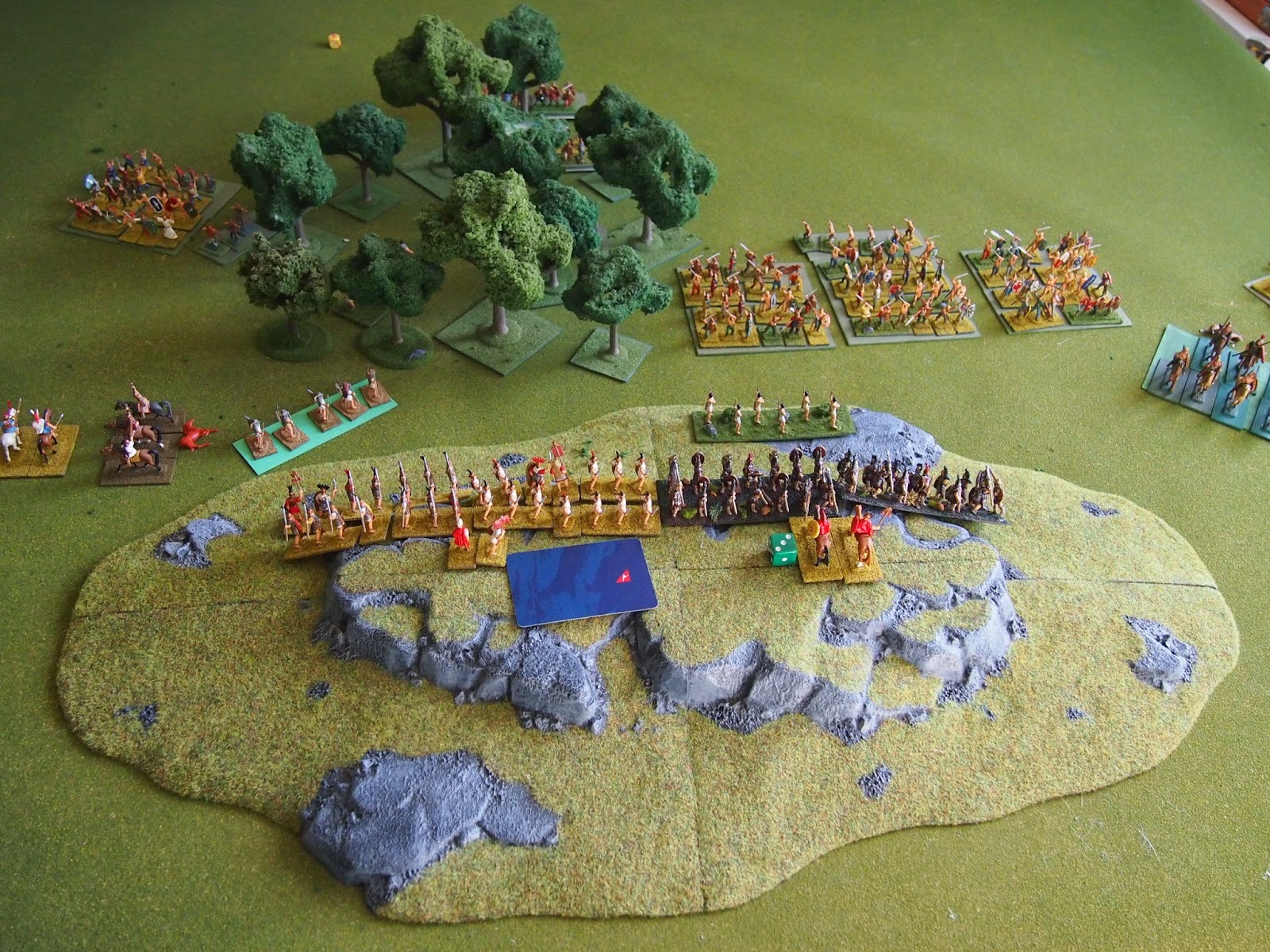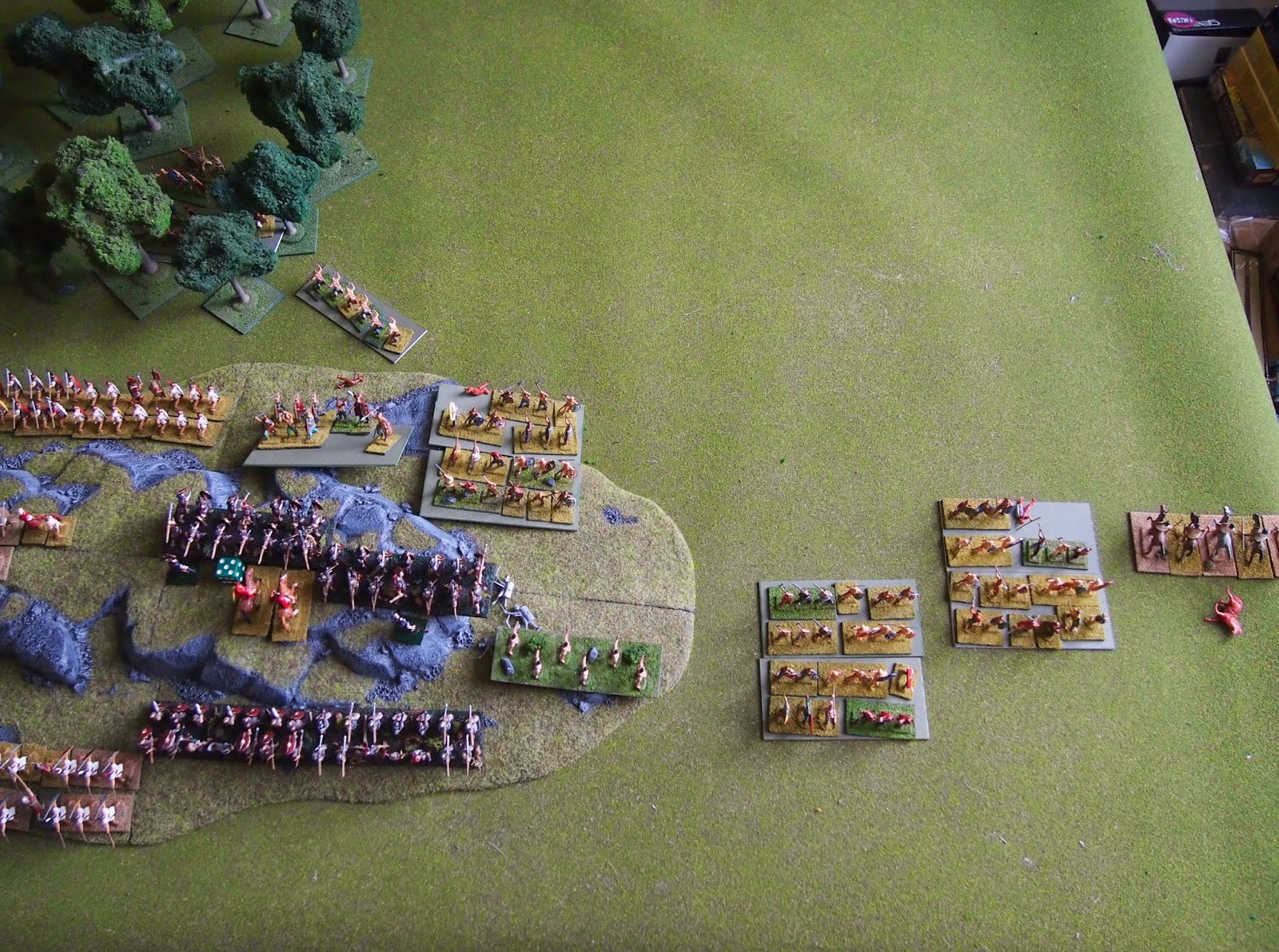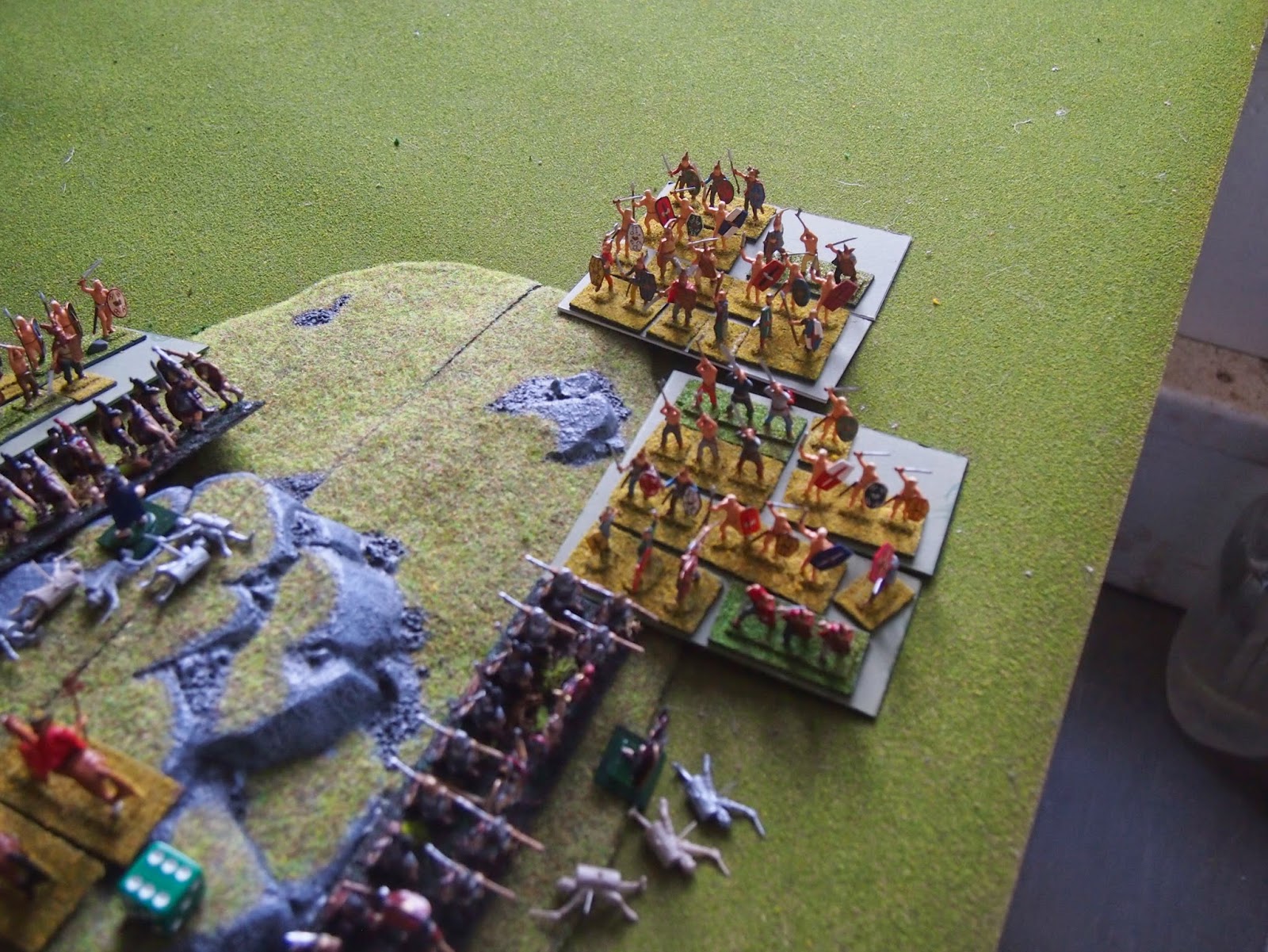(This game was played back on 19th July)
More than two years of campaigning had seen a succession of humiliating defeats for Roman arms at the hands of the Cimbri, Teutones and Ambrones, punctuated by only a single victory over the Teutones in late 104 BC where Quintus Servilius Caepio was victorious.
Now, with the Cimbri and Ambrones ravaging Rome’s Italian provinces and threatening the very gates of the City, the hour had come for Quintus Caecilius Metellus and Quintus Servilius Caepio. Succeed and they would become heroes, with the political influence (and wealth) that that would bring. Fail and their names would forever be associated with ignominy.
Quintus Caecilius Metellus had already achieved greatness, defeating the Ambrones outside Rome. In the same month, Quintus Servilius Caepio, having avoided battle with the Cimbri in Perusia in the first month of the year, followed them into Spoletium, the province that had been the scene of Silanus’ dramatic defeat by the Ambrones. Once again the Cimbri turned to make battle with the Romans. This time Caepio accepted the offer.
He deployed his army, comprising his own command and that of Gnaeus Mallius Maximus on a long hill, cavalry on the flanks, skirmishers to the fore, while the legionaries, deployed in two lines, were arrayed on the reverse slope. The victor of Firmum in late 104 BC was confident that he could repeat his success against the as-yet undefeated Cimbri. He intended to break up the Cimbrian warbands with his skirmishers, use his cavalry to defeat the barbarian horse and, hopefully, to add their weight against the warbands. The frontline legions would then move forward to the face of the hill, with the second line ready to defeat any break-through. All fairly ‘standard’ really!
We rolled for three terrain pieces, as per usual, and ended up with a large wood in the centre of the table, making it the most interesting battlefield of the campaign thus far.
For his part, Biorix deployed his army in ‘classic’ barbarian fashion. Skirmishers in front of his warbands, which were in two lines, with cavalry on either flank. His plan was simple, skirmishers to defeat those of the enemy, disrupt the legions, while the warbands drove forward. The coup de grace was to come from the cavalry and warbands on either flank, which were to get into the flanks and rear of the Roman position.
Biorix began with an approach that had worked previously; send forward his cavalry to defeat “the chasseurs of the ancient world”…
but this time the Italian stallions were not so easily beaten
Meanwhile, Caepio sent his skirmishers to occupy the woods in front of his position,
as the Cimbrians advanced in force.
An overview of the game at this early stage.
The early skirmish combat went one each way.
The Cimbri came on in force.
Stop the press! On the Roman left, the Italian cavalry, those chasseurs of the ancient world, had defeated their barbarian foes! Their Spanish allies moved to threaten the flank of the Cimbrian horse, but they were not required.
On their own left, the Cimbrians came on in force. Here they faced the Nimidian horse—the best cavalry in the ancient world—
… as their warbands continued their advance.
Seeing an opportunity, the right-most Cimbrian warband attacked towards the flank of the Spanish cavalry (though not a flank attack per se),
… but the Spaniards were up to the task!
The opposing skirmishers began to contest the wood.
Lead by their druid, an élite warband did what their brothers could not and defeated the Spanish cavalry.
Caepio prepared his frontline, veteran legio africanus for the coming Cimbrian onslaught.
The first of the warbands closed with the Romans.
To their left, the Cimbrians foolishly attacked the best cavalry of the ancient world,
… who defeated the warriors, went on to beat their supporting cavalry and then withdrew to safety.
Things were not progressing so well for the Roman left as the druid lead his élite warband to overcome the Italian cavalry.
The main battle in the centre was indecisive, so continued with both sides locked in mortal combat.
Looking across the battlefield we see the druid-lead élite warband taking control on the Roman left, the continuing battle in the centre and the warbands on the Roman right faced-off by the Nimidian cavalry.
In the centre, the ‘rock-hard’ Legio africanus fought off the first Cimbrian attacks.
On the left, the tricksy Cimbrians ignored the Nimidian cavalry to position themselves on the right flank of the Roman line.
Overview of the battle at this stage, looking towards the Roman left.
The battle now reached its climax.
Their attacks thus far having been blunted on the shields of the legionaries, the Cimbrian warbands went all-out in attack.
One warband had success against part of Maximus’ frontline legio IX,
… while another fought itself to oblivion along with some of Caepio’s veterans of the african campaigns.
Further to the right of the Roman position, the attacking warband was beaten back,
… with the legionaries of legio africanus counter-attacking to drive them back still further
On the far right of the line, the warbands played their ace, hitting Caepio’s rear-most legio hispania in the flank. The rock-hard legionaries fought desperately,
… their supporting Cretan archers were less inclined to withstand the barbarian onslaught!
The desperate mêlée between legio hispania and warband continued, with each trading casualties.
On the Roman left, Maximus’ legio X, charged the all-conquering, druid-lead, élite warband. Full of confidence themselves (as it turned out they had pulled an ace of spades, making them the equivalent of veteran legionaries), they came off second-best in the mêlée, but merely retired, facing off the Cimbrian élite warriors.
Unable to break-through and with over half their army broken, Boirix’s men left the field.
Caepio, victor of Firmum and now of Spoletium claimed to be the saviour of Rome. Should Quintus Caecilius Metellus (africanus) challenge this claim, he stood poised to “Pull a Sulla” (™Harris & Reilly 2014)#.
With the Teutones, Ambrones and now the Cimbri defeated the Romans had finally prevailed. It had been a top campaign that had generated eight intriguing battles. Mark, as Biorix and acting for the Teutones and Ambrones, where possible, had caused even more mayhem and presented a larger threat than even the historical tribes had. It had taken over two years and two reinforcing armies before they had been defeated.
# An in-joke, for those following the “Life of Caesar” podcast—albeit not absolutely in context and some 15 years before the original!





















































